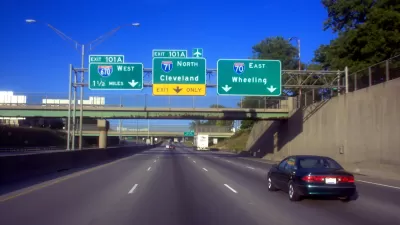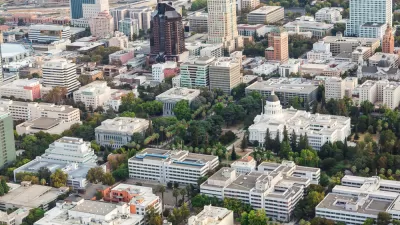William Menking compares the WPA with the current stimulus package and finds many parallels, including an emphasis on shovel-ready projects and a lack of trust in the federal government to plan large-scale infrastructure.
"While the rough balance of funds in the current bill and the WPA evinces a kinship, they will be disbursed in a very different fashion. Harry Hopkins, FDR's handpicked director of the WPA, worked directly with the states to evaluate and select projects. Other agencies, such as the National Recovery Administration (NRA) and the Public Works Administration (PWA), also had their own directors, their own budgets, and the power to choose how best to spend them. The money in the current stimulus package will be apportioned to the states not through newly created agencies based in D.C.- as was the case in the 1930s-but by existing formulas. These formulas evaluate the needs of various localities by calculating factors that range from demographics, to income levels, to official reports on structures and efficiencies. The formulas have the benefit of distributing funds by objective measures rather than political ones, as goes one criticism of the WPA. However, these measures change little from year to year, and a formula-based system has done little to address infrastructure failings at a regional or even national scale.
What has not changed between now and then is the imperative to choose projects that are ready to start construction immediately. What we might call "shovel-ready" projects were a big part of the WPA agenda, and there were a number of regional plans in place, notably those developed by Robert Moses in New York, that captured an enormous share of federal funds."
FULL STORY: Built for the People

Planetizen Federal Action Tracker
A weekly monitor of how Trump’s orders and actions are impacting planners and planning in America.

Congressman Proposes Bill to Rename DC Metro “Trump Train”
The Make Autorail Great Again Act would withhold federal funding to the system until the Washington Metropolitan Area Transit Authority (WMATA), rebrands as the Washington Metropolitan Authority for Greater Access (WMAGA).

The Simple Legislative Tool Transforming Vacant Downtowns
In California, Michigan and Georgia, an easy win is bringing dollars — and delight — back to city centers.

The States Losing Rural Delivery Rooms at an Alarming Pace
In some states, as few as 9% of rural hospitals still deliver babies. As a result, rising pre-term births, no adequate pre-term care and "harrowing" close calls are a growing reality.

The Small South Asian Republic Going all in on EVs
Thanks to one simple policy change less than five years ago, 65% of new cars in this Himalayan country are now electric.

DC Backpedals on Bike Lane Protection, Swaps Barriers for Paint
Citing aesthetic concerns, the city is removing the concrete barriers and flexposts that once separated Arizona Avenue cyclists from motor vehicles.
Urban Design for Planners 1: Software Tools
This six-course series explores essential urban design concepts using open source software and equips planners with the tools they need to participate fully in the urban design process.
Planning for Universal Design
Learn the tools for implementing Universal Design in planning regulations.
Smith Gee Studio
City of Charlotte
City of Camden Redevelopment Agency
City of Astoria
Transportation Research & Education Center (TREC) at Portland State University
US High Speed Rail Association
City of Camden Redevelopment Agency
Municipality of Princeton (NJ)





























